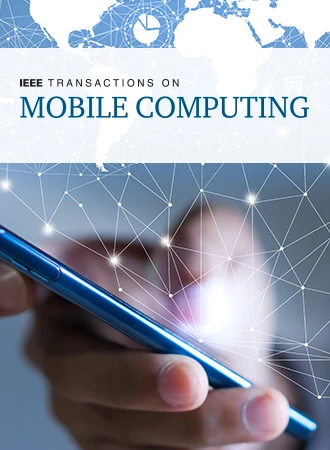电梯,自动扶梯,还是都不是?基于智能手机的任意行人行为下的传送带状态分类
IF 9.2
2区 计算机科学
Q1 COMPUTER SCIENCE, INFORMATION SYSTEMS
引用次数: 0
摘要
了解行人的传送带状态是“电梯”、“自动扶梯”还是“两者都不是”,对于室内导航和人流管理等许多应用来说都是至关重要的。以往的传送带状态分类研究往往依赖于专门设计的穿戴式传感器,或者对行人行为进行了较强的假设,极大地限制了其可部署性。为了克服这一问题,我们使用常用智能手机(包括加速度计、陀螺仪和磁力计)的惯性导航系统(INS)研究了任意行人行为下的分类问题。这是一个具有挑战性的问题,因为传送带状态的INS信号被任意和多样的行人行为所纠缠。我们提出了ELESON,这是一种新颖且轻量级的深度学习方法,它使用手机INS将行人分类为电梯、自动扶梯或两者都不分类。利用因果分解和对抗学习,ELESON提取了与行人行为无关的运输状态的运动和磁性特征,并在此基础上通过证据分类器估计状态置信度。我们制作了一个庞大而多样的数据集,其中包含36,420个行人在任意未知行为下随机乘坐电梯和自动扶梯的实例。我们的大量实验表明,ELESON对行人行为具有鲁棒性,在F1得分中达到0.9以上的高精度,在AUROC (Receiver Operating Characteristics Area Under Area)中达到0.81的强置信度,并且适合普通智能手机部署的低计算和内存要求。本文章由计算机程序翻译,如有差异,请以英文原文为准。
Elevator, Escalator, or Neither? Classifying Conveyor State Using Smartphone Under Arbitrary Pedestrian Behavior
Knowing a pedestrian’s conveyor state of “elevator,” “escalator,” or “neither” is fundamental to many applications such as indoor navigation and people flow management. Previous studies on classifying the conveyor state often rely on specially designed body-worn sensors or make strong assumptions on pedestrian behaviors, which greatly strangles their deployability. To overcome this, we study the classification problem under arbitrary pedestrian behaviors using the inertial navigation system (INS) of the commonly available smartphones (including accelerometer, gyroscope, and magnetometer). This problem is challenging, because the INS signals of the conveyor states are entangled by the arbitrary and diverse pedestrian behaviors. We propose ELESON, a novel and lightweight deep-learning approach that uses phone INS to classify a pedestrian to elevator, escalator, or neither. Using causal decomposition and adversarial learning, ELESON extracts the motion and magnetic features of conveyor state independent of pedestrian behavior, based on which it estimates the state confidence by means of an evidential classifier. We curate a large and diverse dataset with 36,420 instances of pedestrians randomly taking elevators and escalators under arbitrary unknown behaviors. Our extensive experiments show that ELESON is robust against pedestrian behavior, achieving a high accuracy of over 0.9 in F1 score, strong confidence discriminability of 0.81 in AUROC (Area Under the Receiver Operating Characteristics), and low computational and memory requirements fit for common smartphone deployment.
求助全文
通过发布文献求助,成功后即可免费获取论文全文。
去求助
来源期刊
CiteScore
12.90
自引率
2.50%
发文量
403
审稿时长
6.6 months
期刊介绍:
IEEE Transactions on Mobile Computing addresses key technical issues related to various aspects of mobile computing. This includes (a) architectures, (b) support services, (c) algorithm/protocol design and analysis, (d) mobile environments, (e) mobile communication systems, (f) applications, and (g) emerging technologies. Topics of interest span a wide range, covering aspects like mobile networks and hosts, mobility management, multimedia, operating system support, power management, online and mobile environments, security, scalability, reliability, and emerging technologies such as wearable computers, body area networks, and wireless sensor networks. The journal serves as a comprehensive platform for advancements in mobile computing research.

 求助内容:
求助内容: 应助结果提醒方式:
应助结果提醒方式:


